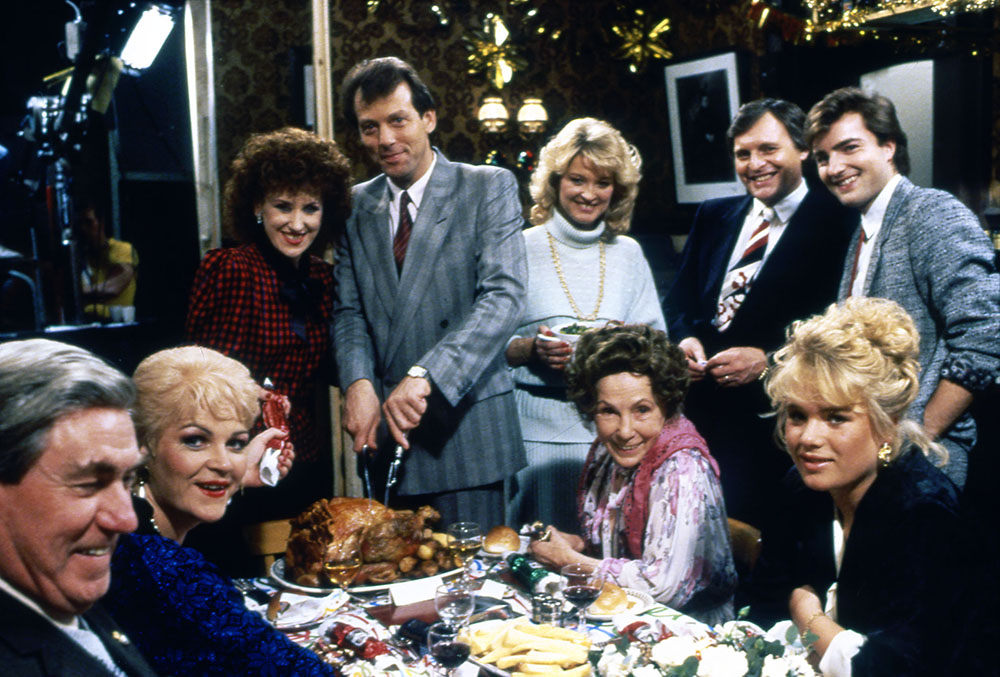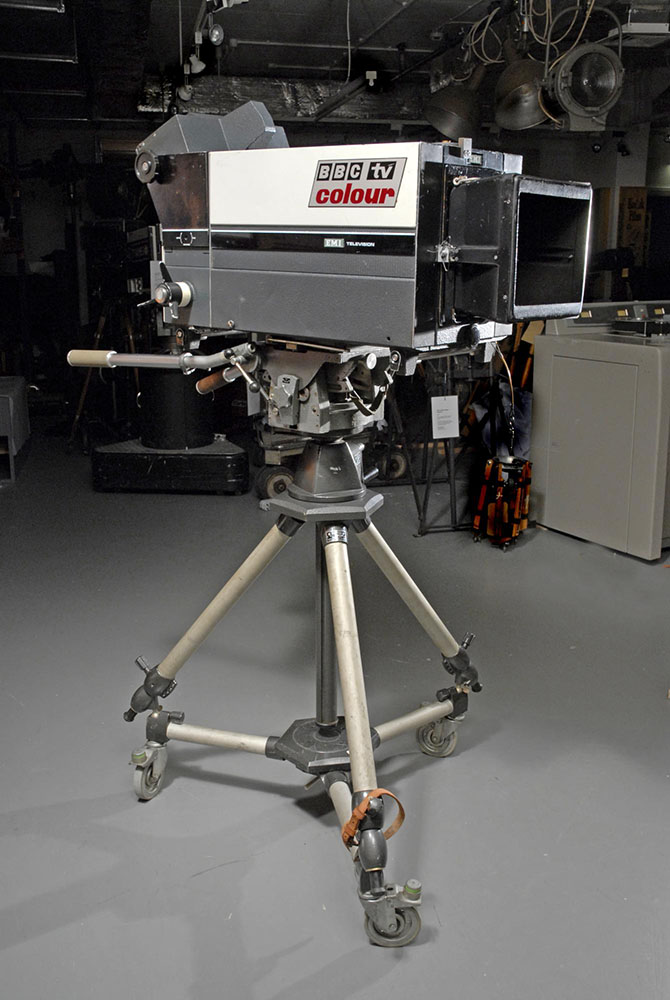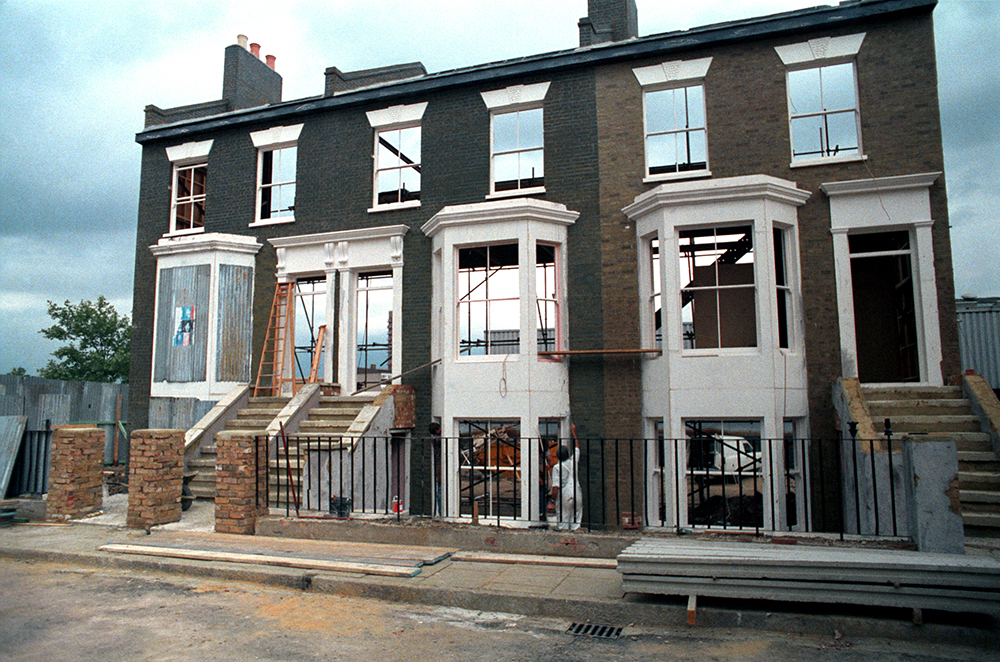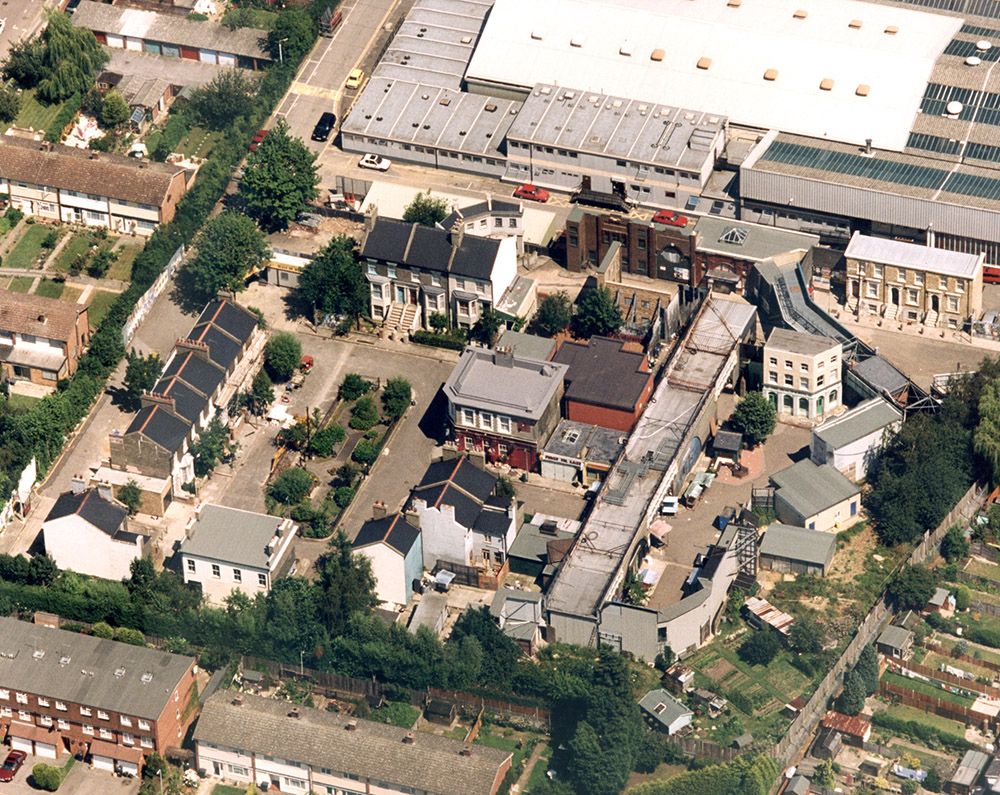EastEnders first appeared on 19 February 1985. The show was an immediate hit and has remained popular ever since—and never more so than on Christmas Day 1986, when more than 30 million viewers tuned in to see (spoiler alert!) Den Watts serve Angie divorce papers.
Following its cast of larger-than-life characters, the long format storytelling of soap operas allows for ever more dramatic events to keep viewers coming back week after week. Moments of drama are often timed to peak with optimum viewing figures—and Christmas is a notoriously volatile time on Albert Square.
‘This, my sweet, is a letter from my solicitor telling you that your husband has filed a petition for divorce’—‘Dirty’ Den Watts
Christmas Day episodes of EastEnders are part of many families’ Christmas routine and the show plays up to its tradition of presenting a gloomier counterpoint to all the jolly festivities of the day. Classic Christmas episodes have seen the deaths of favourite characters Pauline Fowler and Jamie Mitchell, shocking events like the domestic abuse of Little Mo by her husband Trevor in 2001, and the shocking revelation of Max and Stacey’s affair in 2007.
35 years on, Den revealing Angie’s lies in the backroom of the Queen Vic still feels recognisable to viewers too young to remember it. In part because the clip is often repeated, but also because so little has changed. The set has been redecorated and the characters moved on, but the setting and drama are the same.

EastEnders is set in the fictional East London borough of Walford, but has been based at BBC Elstree Studios since its launch. Its permanent sets and core production teams continue a tradition of earlier eras of factory style film-making.
Interior sets are crowded into a soundstage, with moveable walls that can be rearranged for access for the large cameras. During the set-up for the show in 1985 cameras were moved from Television Centre to Elstree Studios. The seminal EMI 2001 was first introduced with the launch of colour television in 1967 and used for some of the BBC’s most famous programmes, including Dad’s Army, Fawlty Towers and Blue Peter. The image quality of the famous Den and Angie scene, produced by the camera’s Plumbicon tube, is indicative of the era.

EastEnders used EMI 2001 cameras until 1991, making it one of the last programmes to use the system. This camera in our collection, used on EastEnders, includes the cast list from 15 May 1991.
Outside, the set for Albert Square is a permanent backlot at BBC Elstree Studios. Constructed on the site previously used as the German building site of the 1980s comedy-drama Auf Wiedersehen, Pet, the set was designed by Keith Harris, based on the real-life Fassett Square in East London. Construction began in 1984 and was only supposed to last two years. Structural steel gave the buildings durability but most of the rest of the materials were intended for short term television production.


Just as storyline arcs coincide with higher audience figures, plots can also be used to serve production needs. The lower quality of the EMI 2001 cameras disguised much of the artificial nature of the original sets. With the move to high definition, the sets became more visible on screen.
The refurbishment of the Queen Vic was written in as a dramatic fire storyline. Airing as a series of episodes on 6–10 September 2010, it saw Phil Mitchell set fire to the pub in the same location as Den and Angie’s confrontation. The event also marked the departure of EastEnders legend Peggy Mitchell, played by Barbara Windsor.
EastEnders started broadcasting in high definition on Christmas Day 2010.
EastEnders provides an engaging mix of comforting continuity and high paced evolving storylines. Major characters like Peggy and Den come and go (and come back again and go again in the case of Den)!
But as with the sets, there is a sense of permanence in soaps; background character Tracey (played by Jane Slaughter) and main character Ian Beale (played by Adam Woodyat) have appeared in the show since its first episode. This despite the revolving wives of Ian Beale and the changing appearance of his children as actors are replaced but characters remain.

As television technology and audience expectations evolve, EastEnders adapts. After more than 30 years a new Albert Square is being constructed on a former car park elsewhere on the Elstree site. The expanded set will feature new areas for characters and plot lines to explore. Crucially, it will be made from more durable materials, with real bricks in place of wooden facades!
The major financial investment demonstrates the enduring popularity of the soap. It looks like EastEnders is not going anywhere anytime soon. It is an institution as much as it is a programme; long may it continue bringing down the tone of Christmas for families around the country.
*Most watched statistics based on television programmes; this does not include news and sports, or special broadcasts such as royal weddings. EastEnders 1986 and the Only Fools and Horses 1996 Christmas special vie for top spot, depending on whether you include contemporary repeats.